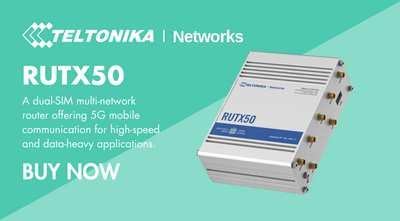
Computer Networks and ‘IP addresses’
If you know what an IP address is, what form it takes and why it must be a unique number, skip this section completely. This section applies to PCs on a network – i.e. any PC that talks to another device somewhere else. A single home PC connected to the internet is part of a network. A standalone PC in an office with a wireless router attached is a network.
What’s an IP address?
Every networked PC has an address, just as a house or business has an address so it can be found. 123, Acacia Avenue, Cheam, is an example of a UK address. In the world of computers this would be written as CR111AZ. Cheam.
AcaciaAvenue.123. A PC’s network address might typically be 83.200.132.254 and the highest number it can possibly be is 255.255.255.255. When the numbering system was invented (called IPv4) it was assumed that it would be enough to give a unique number to every computer ever likely to exist by providing 4.3 billion possible addresses, but on February 3, 2011 the numbers ran out, so a new system is coming on stream called IPv6 to allow for a lot more. This won’t affect your reading of this document as implementation of IPv6 is a little way off yet.
The system was designed so that any IP address could be further divided by using a similar numbering principle called a subnet, the highest number available being 255.255.255.255. (This would be like dividing 123 Acacia Avenue into a very large number of very small flats). Typically the subnet mask is not used and is left at its default number of 255.255.255.0.
If you want to know more about the detail of IP addressing there’s a very full explanation at http://en.wikipedia.org/wiki/IP_address but all we need to know now is that every PC on a network has a unique IP address as four sets of three digits separated by a full stop – nnn.nnn.nnn.nnn
What are they used for and why?
Think of an office with 100 PCs in it. Each one needs its own IP address to identify it uniquely, and so does the office as a whole. This could be achieved, for example, by giving the entire office one address – let’s say 192.168.2.254 – and giving the 100 PCs numbers 192.168.2.1 through to 192.168.2.100.
All the PCs are then wired back to a box (called a router) that picks up data from one machine and sends it to another, and the router would probably be number 254 in the example above. A router works like the Post Office, sending and delivering packets of data. It knows where to send them because every packet of data coming from one PC (think of an envelope containing a letter) has an IP address on the ‘outside’ of it saying where it’s going and another IP address attached to it saying where it’s come from. The router box routes the traffic on the network to the right places using the IP addresses attached to the data that’s travelling though it. Usually, the router is attached to the internet too, so that data from the world outside the office can come in and out. Looked at from the outside world end, the entire office would have the IP address 192.168.1.254 and the office router handles data coming in from the outside and within the office to make sure it arrives at the right PC.
Why the IP address must be ‘right’
If a PC user wants to look at something on a web page somewhere on the internet they would open up a web browser (Internet Explorer, Firefox, Safari, they all do the same job) and type in the name of the place they want to go in the form of www.bloggsltd.co.uk. The browser sends this data to the router in the office, which then sends it on from its own IP address to web servers. Making a very long story short the web servers look up a huge list to find bllogsltd.co.uk and discover what its IP address is. They then send on the request for a home page to the server at that address, which sends back the home page data all the way back to the office router, which passes that to the PC that asked for it and the user gets to see the page. The data request could travel through hundreds of routers and servers and back again in a fraction of a second and the system relies entirely on knowing the correct IP addresses right down the line. Thus IP addresses have to be exactly right or the data doesn’t come back to the right place. What’s more, if any of the 100 machines, which can currently ‘see’ all the others in the office were to have its IP address changed say from 192.168.2.80 to 192.168.3. 80 it wouldn’t ‘see’ any of the other machines and none of the others would see it (rather like it suddenly being moved to a different street). And if someone changed the address of PC number .100 to .99 there would suddenly be two machines on the network with address .99 which could confuse the poor router no end (just as the postman would have trouble with a letter addressed to Acacia Avenue number 123 AND number 122: he wouldn’t know which house in Acacia Avenue to pop the letter into.
Where do IP addresses come from?
To save users having to learn all about IP addresses and how to set up a computer with an address to suit its use on a specific network, it is very common to have the router decide what the IP addresses for all the network PCs should be and tell them to just take the number they are given. The facility is known as DHCP and routers, or many other devices, can be set to hand out IP addresses to other devices by using DHCP. Where this facility is used there is a setting in Windows to ‘Obtain an IP address automatically’ and the process is automated, and a new PC will normally be set up for automatic when it comes out of its box. It’s important not to have two devices on a network both handing out DHCP! Also, if the automatic feature is used the IP address of each PC may change next time it or the network router is restarted. Sometimes it is better to give a PC a fixed number that it will keep permanently.
To sum up:
- Every PC has a unique address in the form of nnn.nnn.nnn.nnn (though it could be just n.n.n.n, or nnn.n.nn.n, or any combination of them, where n is less than 256)
- There is likely to be a subnet address for each PC, typically 255.255.255.0
- No two PCs can have the same IP address on the same network.
- If a PC is not in the right IP address range (one of the numbers other than the final numbers is not the same as all the others) it won’t be able to communicate with any other PC because it’s not on the same network.
- PCs may get their IP address automatically from a network router using DHCP.




